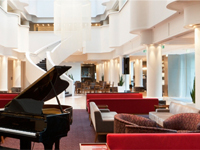Sydney occupancy worst since 2009
Sydney’s hotel occupancy saw a significant year-on-year fall in July as a flurry of new rooms came online and events hosted by the city decreased.
According to preliminary data from data analysts STR, occupancy declined seven percent to 80.5 percent in July, as room supply increased by more than five percent.
The average daily rate dropped by almost seven percent to $194.05 and revenue per available room decreased by a whopping 13.4 percent to $156.12.
It was the second consecutive month with year-over-year declines in each of the three key performance metrics, with the average daily rate the lowest for any month since September 2014, and occupancy the lowest for any July since 2009.
The fall in winter demand followed a record May, in which the Vivid Sydney festival saw 186,000 travel packages sold and near-record crowds flocking to the event despite atrocious weather.
July, in comparison, saw a dearth of marketable events compared with previous years – for example, Arsenal football club played two matches in Sydney on its summer tour in 2017.
Events are just one part of the picture, though.
The decline comes as a new report by hospitality consultancy Horwath HTL shows more than 2400 accommodation rooms were added across 17 Sydney hotels in the year to June 2018.
About 4600 rooms in total will be added to the city’s hotel market by the end of 2022, which is expected to further affect occupancy levels buoyed by years of escalating demand and stagnated hotel growth.
That figure does not account for hotels being delivered in the second half of 2018, including the newly opened 297-room Four Points by Sheraton Sydney, Central Park – providing international accommodation which Jerry Schwartz (who takes ownership of the property in October) says Sydney is “crying out” for.
Crown Group’s Skye Hotel Suites will also open in the CBD in late 2018.
“We are currently tracking some 60 hotel projects in the Sydney pipeline,” said Stefan Muff, Horwath HTL manager and the report’s author.
“Not all of these will progress but at this point we are anticipating that there may be an increase in supply of around six percent in 2020. These additional rooms are likely to put pressure on occupancy.”
In its 2012 paper titled Creating A Long Term Future For The Sydney Hotel Industry, Tourism Accommodation Australia recommended annual hotel supply increases of between 150-550 or 5,000 rooms by 2020 would “allow for market expansion, capture future demand and allow for a sustainable hotel sector in Sydney”.
But it warned: “Supply increases above these limits will see declines in occupancy and room rates, thereby destroying the recent gains the industry has made and reverting back to a boom and bust development cycle.”

AccomNews is not affiliated with any government agency, body or political party. We are an independently owned, family-operated magazine.







